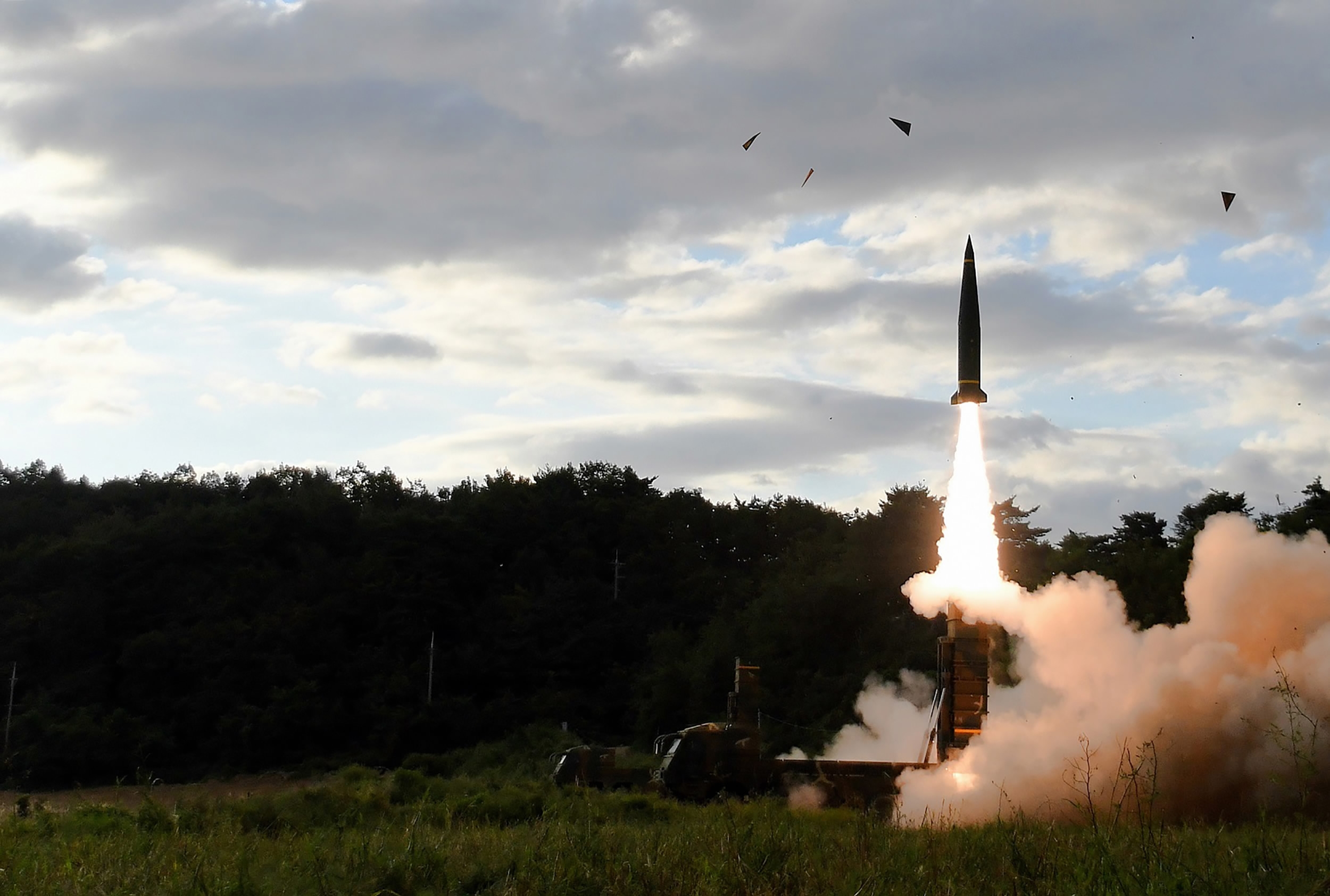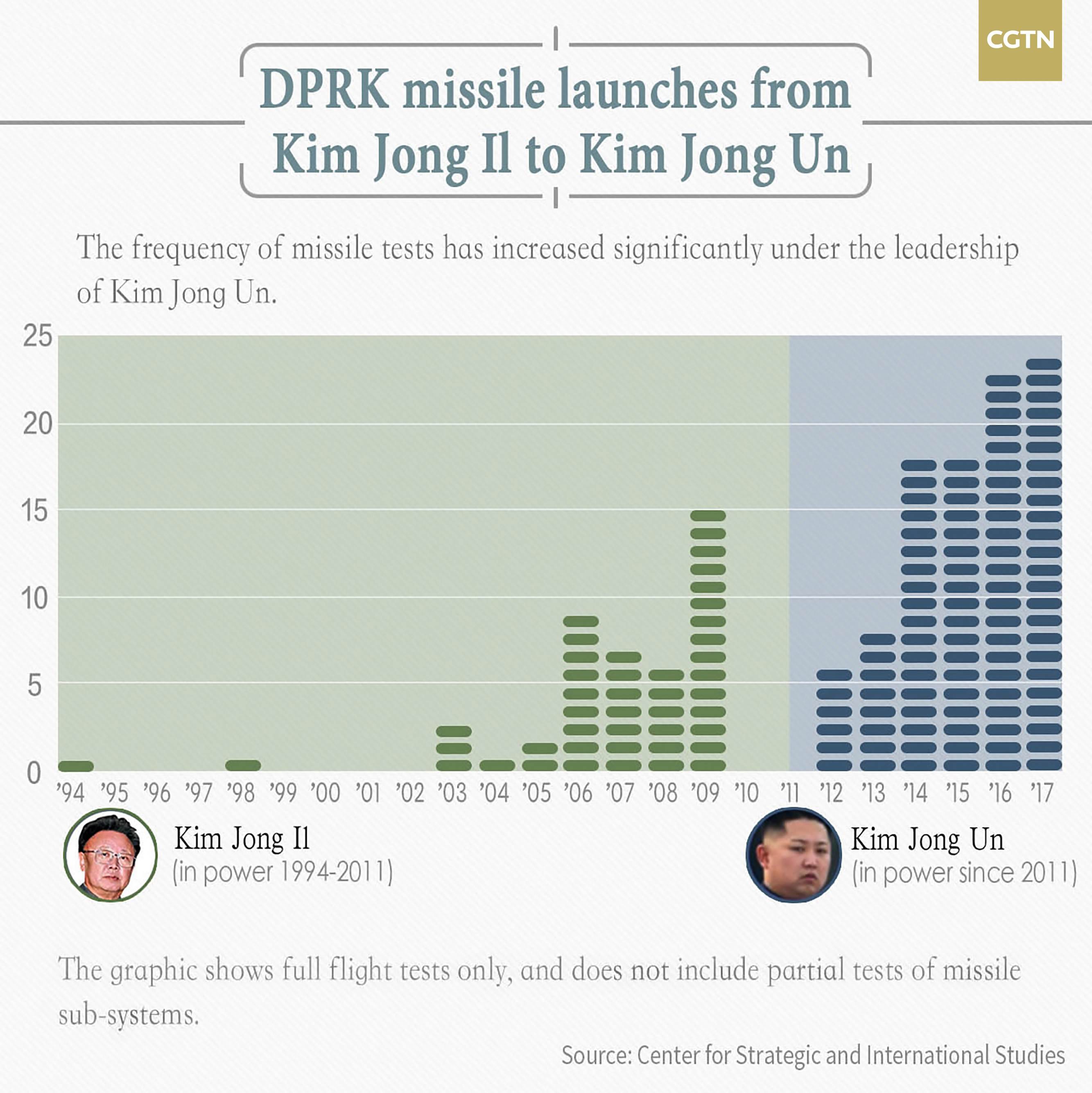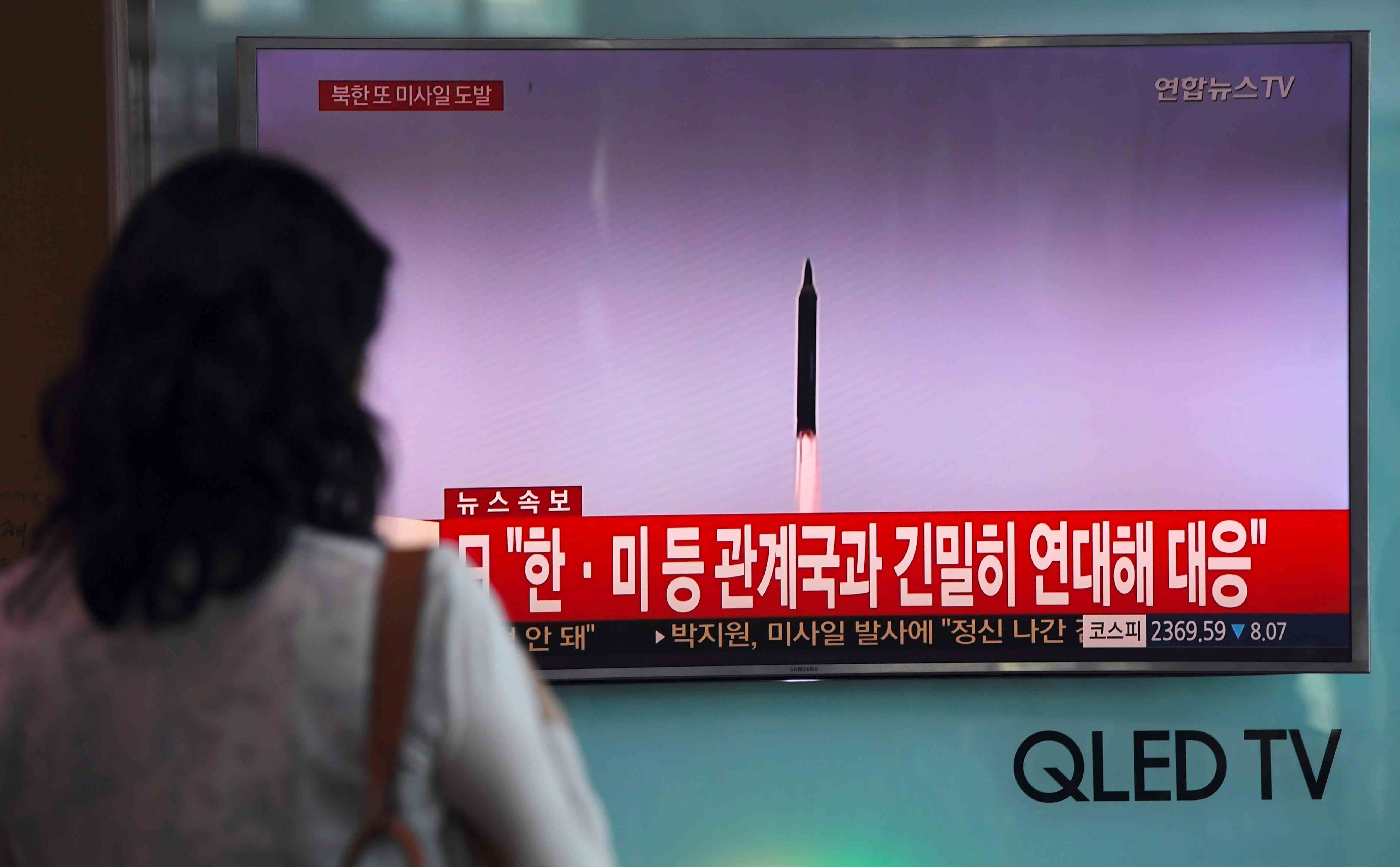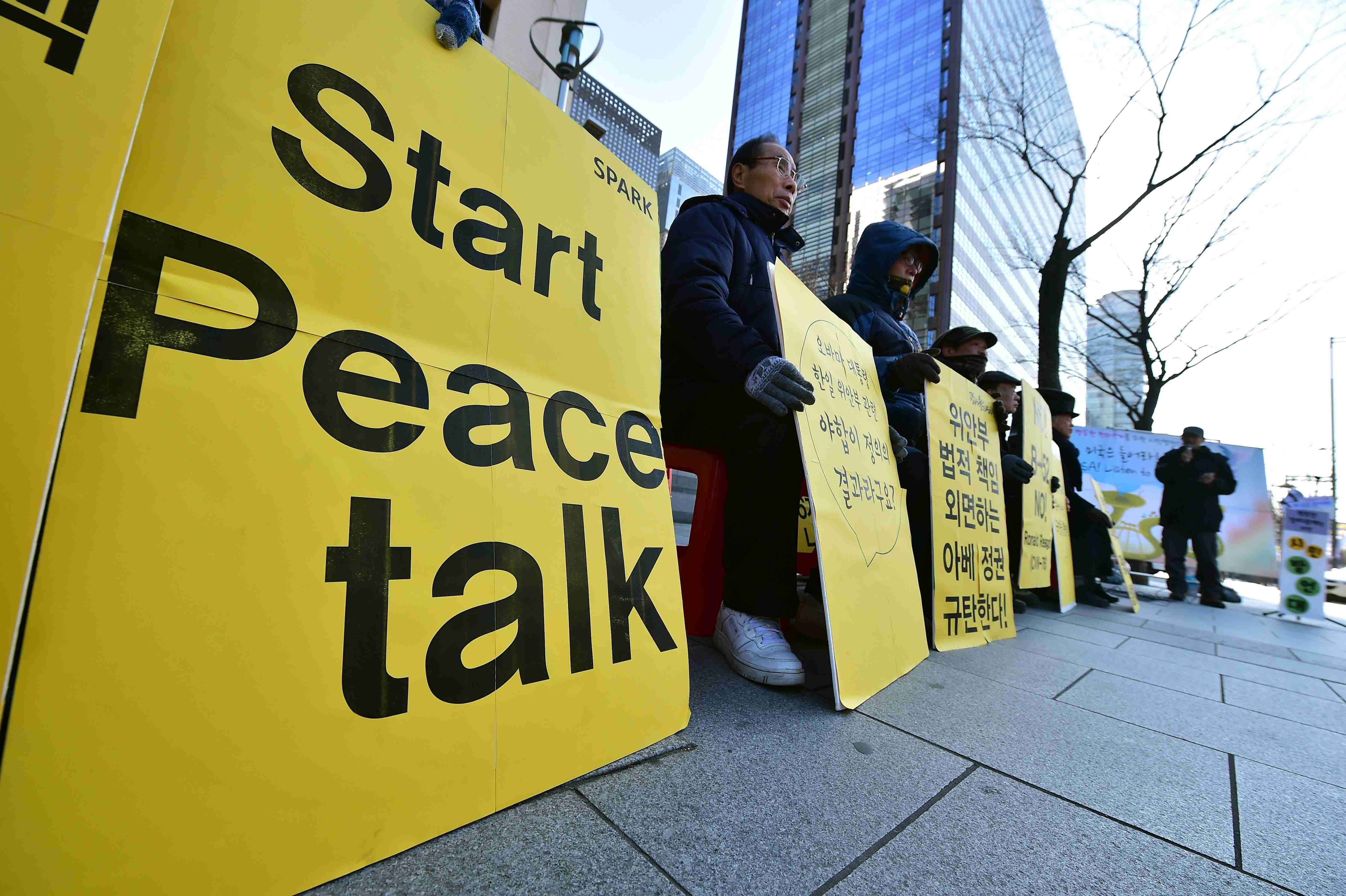
Politics
15:04, 15-Sep-2017
Nuclear deadlock continues on Korean Peninsula
By CGTN's Meng Yaping and Le Tian

The Democratic People’s Republic of Korea (DPRK) launched a ballistic missile over Japan into the Pacific on Friday, in response to the latest UN sanctions and amid increasingly heightened tensions on the Korean Peninsula.
The missile launch immediately triggered condemnations and warnings from the US, Japan and South Korea. In a swift response, Seoul fired two ballistic missiles from an eastern site near the inter-Korean border just six minutes after the DPRK's missile firing from Pyongyang, though one failed in the initial stage.

This handout photo taken on September 15, 2017 and provided by South Korean Defense Ministry in Seoul shows South Korea's missile system firing Hyunmu-2 missile into the East Sea during a live-fire exercise aimed to counter DPRK’s missile test. /AFP Photo
This handout photo taken on September 15, 2017 and provided by South Korean Defense Ministry in Seoul shows South Korea's missile system firing Hyunmu-2 missile into the East Sea during a live-fire exercise aimed to counter DPRK’s missile test. /AFP Photo
The DPRK’s latest missile launch shows the deterioration of diplomacy in the Korean Peninsula situation. It is a prolonged deadlock as the DPRK is not willing to slow down its nuclear ambitions while the international community is not willing to accept a nuclear-equipped DPRK.
Pyongyang has conducted 24 missile launches this year, according to the Center for Strategic and International Studies, and succeeded in its sixth nuclear test, which it labeled as necessary in fighting against military threats from the US and South Korea.


In the meantime, the Donald Trump administration has made the DPRK’s unpredictable moves one of its main diplomatic priorities. Washington led the international community to impose tough sanctions against Pyongyang and increase its military standing in Northeast Asia, which has resulted in this mutual deterrence situation.
“The ‘vicious circle’ on the Korean Peninsula situation will only worsen the security situation of the DPRK as well as the US and South Korea, even lead to bloody conflicts which no one is willing to see,” said Jia Xiudong, a senior research fellow at the China Institute of International Studies, in an editorial published on People’s Daily.
How to get out of the dilemma?
“The only way to get out of the deadlock is a path to dialogue with the DPRK,” Jia pointed out.
After Pyongyang detonated a hydrogen bomb on September 3, Chinese President Xi Jinping exchanged views on the Korean Peninsula situation with US President Donald Trump, Russian President Vladimir Putin, German Chancellor Angela Merkel and French President Emmanuel Macron.

A woman watches a screen showing file footage of a North Korean missile launch, at a railway station in Seoul on September 15, 2017. /AFP Photo
A woman watches a screen showing file footage of a North Korean missile launch, at a railway station in Seoul on September 15, 2017. /AFP Photo
Xi conveyed China’s constant position in continuing to follow the three principles on the issue: Sticking to the Korean Peninsula's denuclearization, sticking to the peninsula's peace and stability, and sticking to solving the problem with dialogue and negotiations.
However, the dialogue process regarding the DPRK nuclear issue has gone through many twists and turns. The stalled six-party talks involving South Korea, the DPRK, the US, China, Russia and Japan were launched by George W. Bush in 2003, but failed to dismantle the DPRK’s nuclear program after six rounds of gathering.
China has pushed to resume the six-party talks, but there has been very little progress.

Anti-war activists hold placards reading "Start peace talk," during a rally urging six party peace talks near the US embassy in Seoul on January 12, 2016. /AFP Photo
Anti-war activists hold placards reading "Start peace talk," during a rally urging six party peace talks near the US embassy in Seoul on January 12, 2016. /AFP Photo
The DPRK’s recent nuclear and missile tests violated relevant UN Security Council’s resolutions and should be condemned by the international community - but the world also needs to be aware that the DPRK’s nuclear issue cannot be fundamentally solved by repeated sanctions and isolation. But also, on the DPRK’s part, the possession of nuclear weapons is not an absolute guarantee for its security.
The sticking point of the deadlock, which has enveloped Pyongyang and Washington, is the long-standing and deep-rooted distrust between the two sides, and they both have their own security concerns. Now, the problem is how to address them.
“The suspension-for-suspension proposal and dual-track approach put forward by China catches the core of the problem and takes all parties’ security concerns into consideration. Though it might not please all sides, it can crack the plight on the Korean Peninsula,” Jia underscored.
The idea of the dual-track approach involves parallel efforts to move forward both denuclearization and the establishment of a peace process on the peninsula. The initiative of suspension-for-suspension calls for the DPRK to suspend its nuclear and missile activities, and for the US and South Korea to suspend their large-scale war games.

SITEMAP
Copyright © 2018 CGTN. Beijing ICP prepared NO.16065310-3
Copyright © 2018 CGTN. Beijing ICP prepared NO.16065310-3